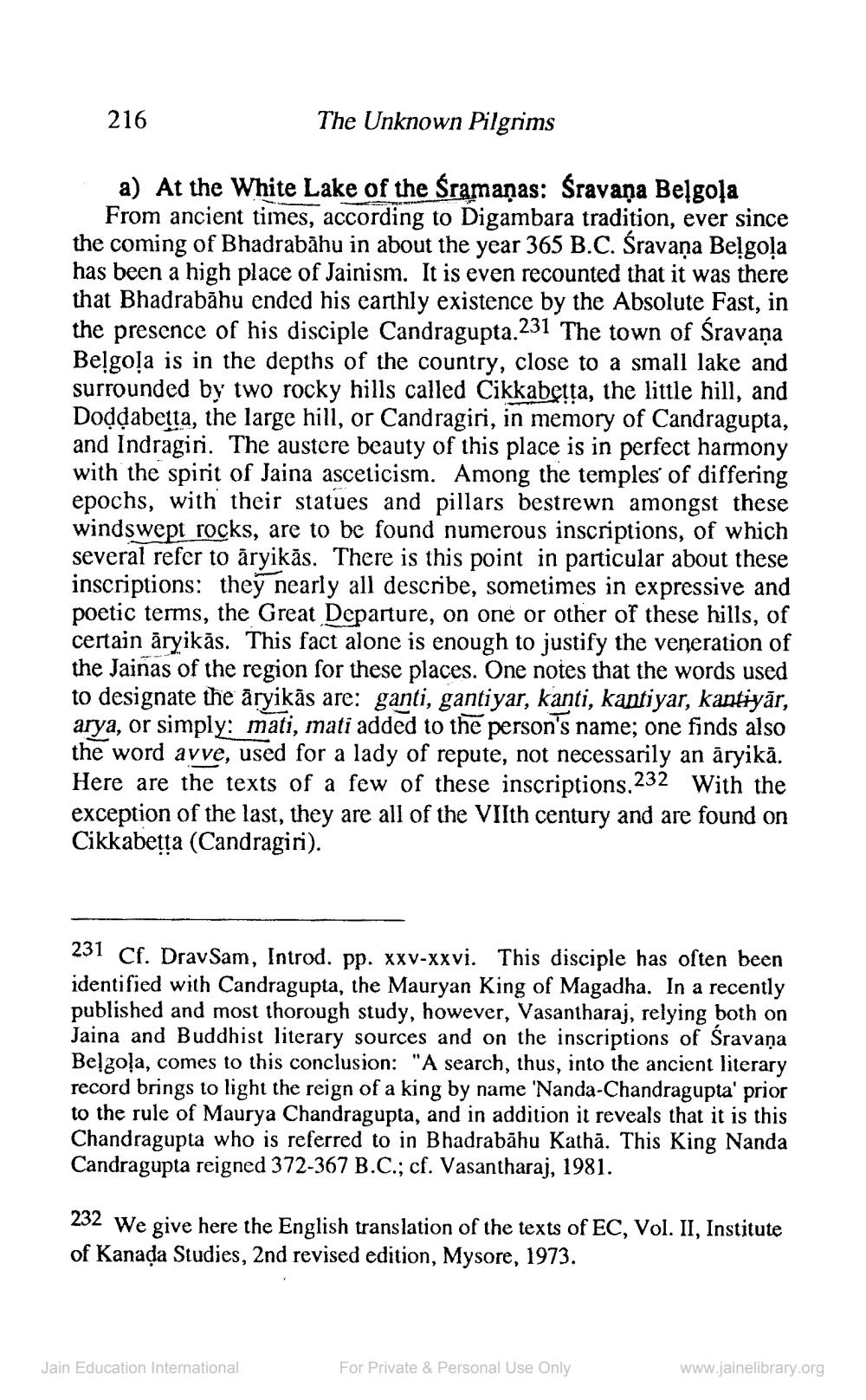________________
216
The Unknown Pilgrims
a) At the White Lake of the Sramaņas: Śravana Belgola From ancient times, according to Digambara tradition, ever since the coming of Bhadrabahu in about the year 365 B.C. Śravana Belgola has been a high place of Jainism. It is even recounted that it was there that Bhadrabāhu ended his earthly existence by the Absolute Fast, in the presence of his disciple Candragupta.231 The town of Śravana Belgoļa is in the depths of the country, close to a small lake and surrounded by two rocky hills called Cikkabetta, the little hill, and Doddabetta, the large hill, or Candragiri, in memory of Candragupta, and Indragiri. The austere beauty of this place is in perfect harmony with the spirit of Jaina asceticism. Among the temples of differing epochs, with their statues and pillars bestrewn amongst these windswept rocks, are to be found numerous inscriptions, of which several refer to āryikās. There is this point in particular about these inscriptions: they nearly all describe, sometimes in expressive and poetic terms, the Great Departure, on one or other of these hills, of certain āryikās. This fact alone is enough to justify the veneration of the Jainas of the region for these places. One notes that the words used to designate the aryikās are: ganti, gantiyar, kanti, kantiyar, kantiyār, arya, or simply: mati, mati added to the person's name; one finds also the word avve, used for a lady of repute, not necessarily an āryikā. Here are the texts of a few of these inscriptions.232 With the exception of the last, they are all of the VIIth century and are found on Cikkabetta (Candragiri).
231 Cf. DravSam, Introd. pp. XXV-xxvi. This disciple has often been identified with Candragupta, the Mauryan King of Magadha. In a recently published and most thorough study, however, Vasantharaj, relying both on Jaina and Buddhist literary sources and on the inscriptions of Śravaņa Be!go!a, comes to this conclusion: "A search, thus, into the ancient literary record brings to light the reign of a king by name 'Nanda-Chandragupta' prior to the rule of Maurya Chandragupta, and in addition it reveals that it is this Chandragupta who is referred to in Bhadrabāhu Kathā. This King Nanda Candragupta reigned 372-367 B.C.; cf. Vasantharaj, 1981.
232 We give here the English translation of the texts of EC, Vol. II, Institute of Kanada Studies, 2nd revised edition, Mysore, 1973.
Jain Education International
For Private & Personal Use Only
www.jainelibrary.org




